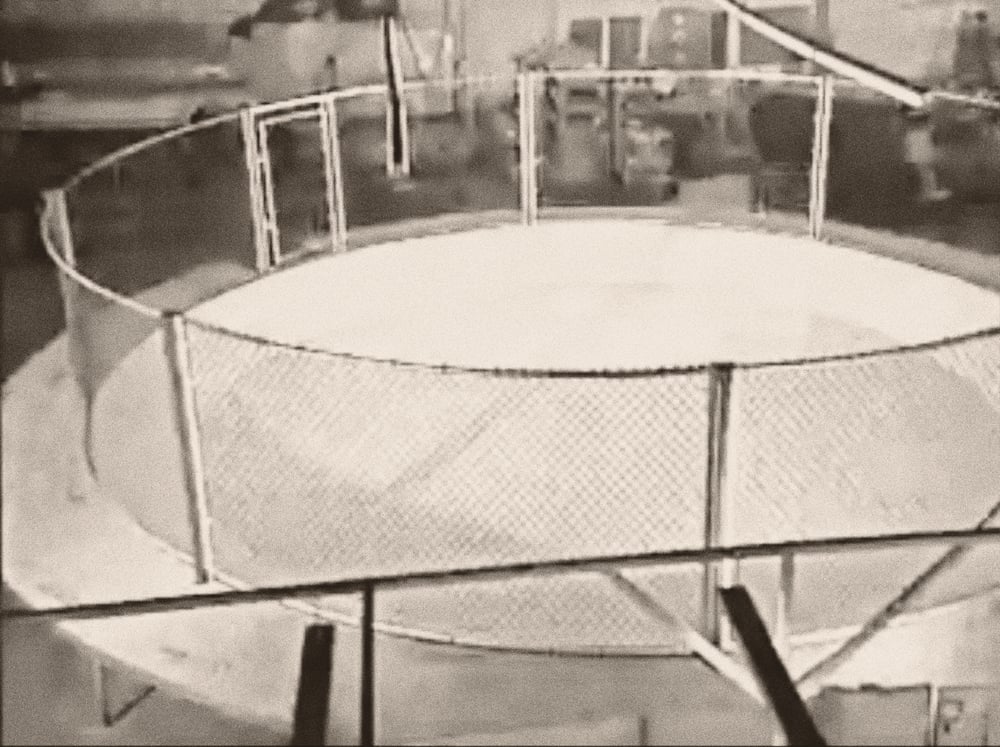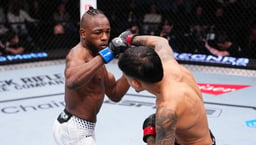
Issue 089
June 2012
A look back at some of the landmark moments in the history of MMA. The master plan that was going to ‘revitalize MMA,’ but ultimately submitted itself inside the opening round – with perhaps a small sense of irony.
In early 2008, Bob Meyrowitz had a vision. The co-founder of the Ultimate Fighting Championship in the mid ‘90s was getting back into the fight game and he had a surefire plan that was going to revitalize mixed martial arts. Bob shared his concept with the world…
“In the last few years in watching mixed martial arts, so frequently what has happened is the fighters get caught up against the fence and stay there and then the referee has to stand them up. It goes against everything that it’s supposed to be about. Fighting should be continuous, so I came up with… this fighting surface that I think will keep the fight continuous. It’s going to make it much better.”
This innovation was called the Yamma – and the new promotion’s first event was set for April 11th 2008 at the Trump Taj Mahal in Atlantic City. When it was finally unveiled, the Yamma was less spectacular than some had imagined. It was a large circular cage around a canvas that had edges that sloped up to the fence. Designer Jeff Nagle was sure the lack of corners and places to trap an opponent against the fence guaranteed excitement.
“I say, either way, you’re going to see styles morphing and other styles falling apart,” Nagle insisted. “You will not see the stalls, you will not see the clinch and the hold-against-the-fence game. You will see non-stop action because this is the fastest fighting surface that I’ve ever seen.”
In terms of the fight card, it was a case of back to the future. Meyrowitz organized an eight-man tournament, the same format that had worked for him at the original UFC. To round out the night, he booked two ‘masters’ fights. What could possibly go wrong? As it turned out, just about everything.
Times had changed since Bob had been away. In 2008, fans seeking an alternative to the UFC were turning to the up-tempo, technical excellence of the lighter weight classes in the WEC. Every fight on the Yamma Pit Fighting card was a heavyweight contest, hardly the ideal group to demonstrate the lightning-fast new cage. Even more curiously, the majority of the journeymen and newcomers who had been selected for the tournament were wrestlers – fighters with the exact skill-set that Yamma had been designed to eliminate.

Meyrowitz also had to deal with a factor that had been absent in the pioneer days: regulation. The New Jersey State Athletic Commission ruled that no fighter could compete for over 25 minutes in one night. As a result, each of the first round and semi-final fights were scheduled for a single five-minute round.
The show went out on pay-per-view with old-time UFC commentator Jeff Blatnick presenting. By general consensus, ‘Big’ Jeff did his usual efficient job on the microphone. But the same cannot be said of ring announcer Scott Ferrall. For reasons known only to himself, Ferrall decided to make up nicknames for every fighter that entered the cage or as he called them “warriors and freaks ready to pound and dance,” or, “going to the electric chair.” Most viewers agreed that calling the Yamma belt the ‘strap-on’ was the lowlight of his idiosyncratic performance.
Such tacky production details would have been forgiven if the fights had delivered. Unfortunately, out of seven tournament fights, only one ended inside the distance – and many blamed Yamma itself for the outcome. The slanting floor made takedowns far easier to execute. Once an opponent was on his back, it was far harder for him to steady himself in order to get up onto his feet. With only five minutes on the clock, the sensible option was to get your man down and try to do enough from top position to impress the judges. The invention that was supposed to guarantee action provided a lay ‘n’ pray fest. This was especially disappointing for the few who had bought floor seats at the venue, because as soon as the fighters hit the deck, the banked surface meant they couldn’t see a thing.

In the first masters fight, Oleg Taktarov defeated Mark Kerr by way of kneebar. Both men were past their best, but they put on a decent scrap. The second Yamma Pit Fighting masters fight was memorable for all the wrong reasons. UFC 1 veteran Pat Smith faced off against boxer and MMA fighter Eric ‘Butterbean’ Esch. Pushing the 400lb ‘Bean as the star attraction of a dynamic new promotion was a big ask to start with. When the former boxer began to wave his leg in a bizarre manner that was supposed to resemble a kick, it became laughable. The match ended when Butterbean inexplicably dived forward and became beached on the canvas where Smith pounded him until he submitted. This became the abiding image of Yamma Pit Fighting.
Yamma was advertised as a revolution in MMA, but, in reality, it was a throwback. Its mixture of freakshow fighters, gimmicks and sensational marketing failed to bring in the pay-per-view buys. What worked for Bob Meyrowitz in 1993 looked embarrassing in 2008. Although a small minority of fans could still be turned on by the promise of spectacle and overweight men fighting in a pit, most had moved with the times as ultimate fighting had developed into a bona fide sport. The middleweight tournament slated for June 2008 never happened and Yamma bit the dust.
...









